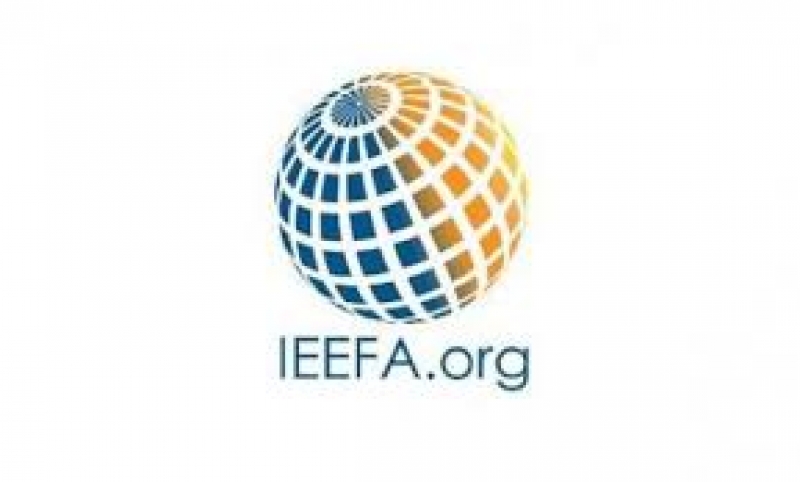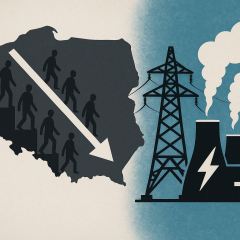Comment "RT-ON" Foundation: It is not true that only European banks are quitting coal. The situation is similar in Asia. For Polish coal companies every week it will be more difficult to find financing and provide insurance for new coal projects such as the Złoczew, Ościsłowo and Ostrołęka C power plants.
SOURCE: The Institute for Energy Economics and Financial Analysis
Cheaper renewables, improved technology, and risks over reputation, financial performance and the environment are driving transition
(IEEFA Asia-Pacific) – Five major financial institutions in Asia have over the past six weeks announced plans to move away from financing coal-fired power plants, signalling an accelerating trend across the region out of coal towards renewables.Singapore’s big three banks – DBS Group Holdings (DBS), United Overseas Bank (UOB) and the Oversea-Chinese Banking Corporation (OCBC), Southeast Asia’s second-largest lender, have each announced ending financing for new coal-fired power plants in the last month.This builds on ground-breaking moves by State Development & Investment Corporation (SDIC), the first major domestic Chinese financial institution to completely exit the coal industry in March 2019, and Japan’s Mitsubishi UFJ Financial Group (MUFG), the biggest bank in the world outside China, that announced a coal exit in April 2019.Echoing what was originally a largely European phenomenon, the recent Asian financial exodus highlights growing regional concerns over the increasing risks of stranded assets and environmental costs in the thermal coal power industry.Recent announcements also highlight the shifting positions of governments in leading Asian economies, that are recognizing the necessity for transitioning away from coal into increasingly cheaper, domestic, sustainable alternatives that meet the growing energy needs of their burgeoning populations.Indeed, on 16 April, OCBC Chief Executive Officer Samuel Tsien said he hoped the company’s decision to exit coal would encourage governments to make arrangements to accelerate the move from coal to renewables, consistent with their obligations under the Paris Agreement.
Financial institutions, leading corporations, as well as top-down government policies in Asia are moving away from coal. Asian countries including India, Japan, China, Singapore, South Korea and, most recently Thailand, are increasingly providing global leadership to ‘ratchet-up’ ambitions to deliver on the Paris Agreement – both through the movement of their financial institutions and leading corporations away from coal, as well as through top-down government policy – to transition away from an over-reliance on increasingly expensive imported thermal coal to zero-emission and lower cost domestic renewable-energy options.
Peak coal-fired power capacity is on the horizon in India, a concept impossible to imagine at the start of this decade.
By targeting 275 gigawatts (GW) of renewable energy installed capacity by 2027, the Government of India is moving the country away from a reliance on imported coal through targeted measures to encourage industry investment of now least-cost renewable energy whilst progressively taxing the externalities of coal use. And leading Indian corporations are exemplars in leading the transition to low-cost renewable technologies. For example, Tata Power, the largest private integrated power company, is now one of India’s leading renewable energy investors, underpinning the electricity sector transition through its recent withdrawal from building new coal-fired power plants. India’s shift away from new coal-fired power is moving faster than anyone had predicted, driven by the economics of renewables moving well below grid parity. Continuing growth in electricity demand will be better served by utilising existing domestic coal power capacity, complemented by the rapid expansion of 20-40GW annually of new renewable energy capacity.
Japan is now emerging as a global leader in promoting the Paris Agreement.
A growing list of leading Japanese trading houses have already completely exited thermal coal mining and new coal-fired power plant development, recognising the rapid cost decline and increased uptake of renewable energy sources. Over the past six months, leading Japanese trading houses (Marubeni, Sojitz Corp., ITOCHU, Mitsui and Mitsubishi) have stated they will no longer own, nor invest in new thermal coal capacity. Leading Japanese financial institutions are also rapidly re-assessing their business models, with partial coal exits and/or restrictions announced by Sumitomo Mitsui Trust Bank, Nippon Life Insurance, Dai-Ichi Life Insurance and, most recently, MUFG. Japan’s government is also examining its position, with Environment Minister Yoshiaki Harada releasing a policy initiative in March 2019 stating that the Ministry will no longer sanction the construction of new thermal coal plant facilities nor upgrade existing ones, in line with the country’s international pledges to tackle global warming. In South Korea, the Ministry of Trade, Industry and Energy recently tabled a new draft energy master plan that increases the nation’s ambition to move away from coal and nuclear towards renewable energy and gas, paving the way for financial and economic domestic transition.
Recent move by SDIC Bank to exit coal investments may indicate a change in China’s strategic direction going forward. And although China, the world’s biggest importer, producer and consumer of thermal coal, has yet to act to limit the financing and building of new coal-fired power plants, the recent move by SDIC Bank to exit coal investments may indicate a change in the country’s strategic direction going forward. Asia’s growing ambition to invest in new and increasingly lower-cost domestic renewable energy technologies reflects changes in the regional energy security and pollution dialogue, and the growing environmental and reputational concerns of institutions and governments alike.
Countries and companies are increasingly building in measures to meet their Paris commitments, recognising the economic, environmental and social costs of continuing fossil fuel extraction, including the potential for expensive and obsolete stranded assets and reduced domestic energy and geopolitical security. A recent IEEFA report, Over 100 Global Financial Institutions Are Exiting Coal, With More to Come calculated the number of significant global banks and insurers (holding more than US$ 10 billion worth of assets under management) retreating from coal financing at just over 100 as of late February 2019. Ten weeks later, a total of 112 global financial institutions to date have announced a coal exit.
Putting this into perspective, every week in 2019, at least one globally significant financial institution has announced an exit from thermal coal.
In addition to the five recent major announcements in Asia, two leading European insurers, UNIQA of Austria and MAPFRE of Spain, and one French asset manager, BNP Paribas of France, brought in new restrictions on thermal coal financing, insurance and/or investments during March 2019. In April 2019, Australia’s QBE Insurance announced the cessation of investment in and insurance for thermal coal projects; Switzerland’s UBS announced an updated coal power exit policy; Norway’s Government Pension Fund Global confirmed it will now invest in unlisted renewable energy infrastructure and is tightening criteria that will lead to divestment from large mines and coal-exposed power companies; and major German insurer Hannover Re announced a scaling back of its thermal coal exposure over the long term. While Hannover Re’s initial May 2018 coal policy proposal was mostly an effort in ‘greenwashing’, the institution revisited and tightened its policy last month. This is a recurring theme. IEEFA has found that while initial global coal exit measures vary in stringency, the trend is for financial institutions over time to ‘ratchet up’ the strength of policies once they are put in place, to bring them more consistently in line with meeting Paris goals. Investors are increasingly aware that global thermal coal forecasts are dour, with renewables inevitably emerging as the low-cost economic solution. Renewable technology and financials have moved on, and climate-energy policy shifts are on the upswing. Environmental and reputational concerns are also driving factors for capital fleeing coal, particularly in Asia where air pollution is a key aspect.
With cheaper renewable uptake gathering speed across Asia, the likelihood of investors left holding billions of dollars in stranded assets banked in fossil fuels is increasingly impossible to overlook. Singapore, South Korea and India are moving, and Japan has recently signalled an intention to transition its national energy plan to accelerate decarbonisation, although a formal policy announcement has yet to be released. March 2019 saw Thailand surprise observers with its updated power development plan 2018-2037 halving their target for coal to just 12% by 2037, down from the previous 25% by 2036 target. And while it is encouraging that SDIC has now fully divested from coal, a suite of policy ambitions by the Chinese government in their international investments coupled with more significant announcements from industry and the banks would provide the leadership needed to inspire regional laggards that have yet to follow suit. Meanwhile, the global financial industry is continuing its capital flight from thermal coal and the coal power sector.
We expect this trend to continue to accelerate.
Tim Buckley (This email address is being protected from spambots. You need JavaScript enabled to view it.) is director of energy finance studies with IEEFA Australasia.








